Grease Heel in Horses
Updated on 04/26/24
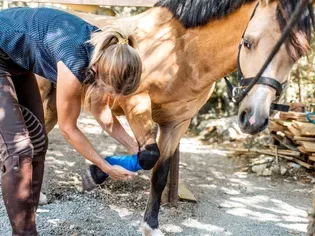
Grease Heel in Horses: A Comprehensive Guide to Prevention, Treatment, and Healing
Introduction
Grease heel, also known as pastern dermatitis, is a common bacterial infection that affects the skin and underlying tissues of the pastern area in horses. This condition can cause significant discomfort, lameness, and even scarring if left untreated. In this comprehensive blog post, we will delve into the causes, symptoms, diagnosis, treatment options, preventive measures, and healing process of grease heel in horses, providing horse owners and caretakers with the necessary knowledge and guidance to effectively manage this condition.
Causes of Grease Heel
Grease heel is primarily caused by bacterial infection, commonly by the bacteria Staphylococcus aureus. This infection thrives in moist environments, particularly when the pastern area is exposed to prolonged wetness, such as during prolonged rainy periods or when horses are kept in damp conditions. Other factors that can contribute to the development of grease heel include:
* Poor hygiene practices
* Overcrowding in stalls or pastures
* Immunosuppression
* Concurrent dermatitis or skin conditions
* Allergic reactions
* Trauma or injury to the pastern area
Symptoms of Grease Heel
Grease heel typically presents with the following symptoms:
* Moist, softened skin in the pastern area
* Redness and swelling
* Scaling and crusting of the skin
* Exudate (pus) discharge
* Ulceration and skin erosion
* Itching and discomfort
* Lameness in severe cases
Diagnosis of Grease Heel
Diagnosis of grease heel involves a thorough clinical examination by a veterinarian. The veterinarian will assess the horse's pastern area, history, and lifestyle factors to determine the underlying cause. The veterinarian may also recommend cytology or bacterial culture and sensitivity testing to confirm the diagnosis and identify the specific bacteria involved.
Treatment Options for Grease Heel
The treatment of grease heel typically involves a combination of topical and systemic medications, as well as supportive care.
Topical Treatments:
* Antibiotics: Topical antibiotics, such as neomycin, bacitracin, or mupirocin, are used to kill the bacteria causing the infection.
* Antiseptics: Antiseptic solutions, such as chlorhexidine or iodine, are used to clean and disinfect the affected area.
* Antifungal medications: If a fungal infection is suspected, antifungal medications may be prescribed.
* Emollients: Emollients, such as petroleum jelly or lanolin, are used to soothe and protect the skin.
Systemic Treatments:
* Oral antibiotics: In severe cases, oral antibiotics may be prescribed to combat the infection systemically.
* Anti-inflammatory medications: Non-steroidal anti-inflammatory drugs (NSAIDs) may be used to reduce inflammation and pain.
Supportive Care:
* Rest: Restricting the horse's activity and keeping the affected area clean and dry can promote healing.
* Bandages and wraps: Protective bandages or wraps can be used to cover the affected area and prevent further contamination.
* Environmental management: Keeping the horse's stall or pasture dry and clean is crucial for preventing recurrence.
Preventive Measures for Grease Heel
Preventing grease heel is essential for maintaining the health and well-being of horses. Here are some preventive measures:
* Keep the pastern area clean and dry.
* Provide adequate drainage in stalls and pastures.
* Avoid overcrowding.
* Practice good hygiene, including regular hoof cleaning.
* Treat any underlying skin conditions or allergies promptly.
* Vaccinate horses against common bacterial infections.
Healing Process of Grease Heel
The healing process of grease heel depends on the severity of the infection and the horse's overall health status. Mild cases may resolve within a few weeks with proper treatment. However, severe cases may require longer treatment and may leave scarring.
During the healing process, it is important to monitor the affected area for signs of improvement or worsening. Keep the area clean and dry, and follow your veterinarian's instructions for medication and wound care. If the infection does not respond to treatment or worsens, further veterinary evaluation may be necessary.
Conclusion
Grease heel is a common and treatable condition in horses. By understanding the causes, symptoms, and treatment options, horse owners and caretakers can effectively manage and prevent this condition. Maintaining good hygiene practices, providing a clean and dry environment, and seeking veterinary attention promptly are crucial for the well-being and comfort of horses. Remember, a healthy and happy horse is a treasured companion.
Explore More Pets

Pony Breeds
The Difference Between Horses and Ponies

Horse Diseases & Conditions
What Do I Do If My Horse Colics?
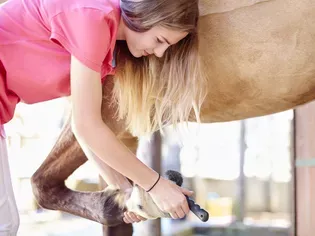
Pony Breeds
Horse and Pony Care by the Day, Week, Month and Year
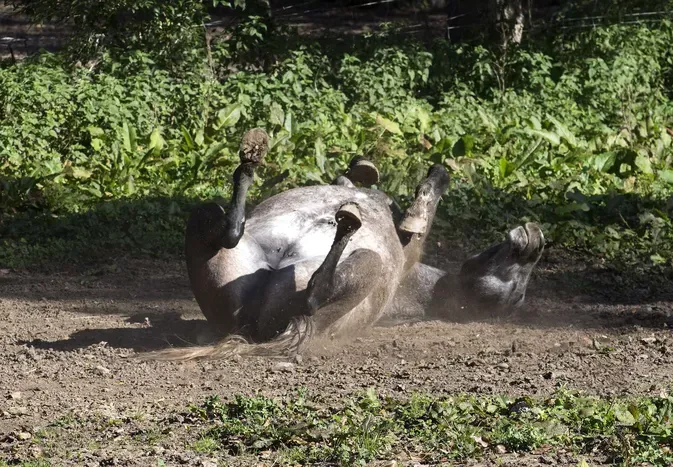
Horse Grooming
Mange in Horses
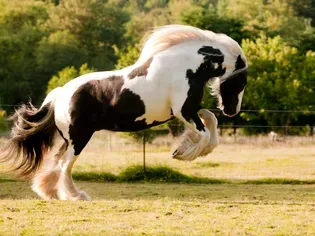
Light Horse Breeds
Gypsy Vanner Horse Breed Profile
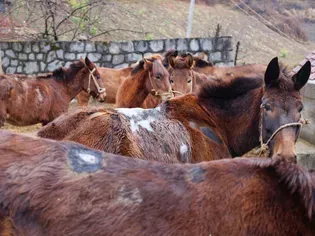
Horse Diseases & Conditions
Girth Galls and Saddle Sores
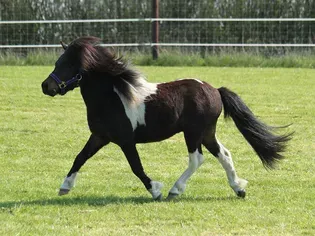
Pony Breeds
Shetland Pony Breed Profile
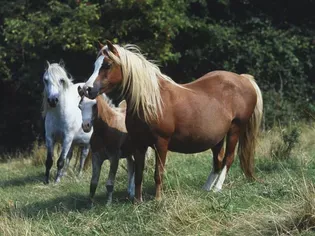
Horse Diseases & Conditions
Hay Belly in Horses